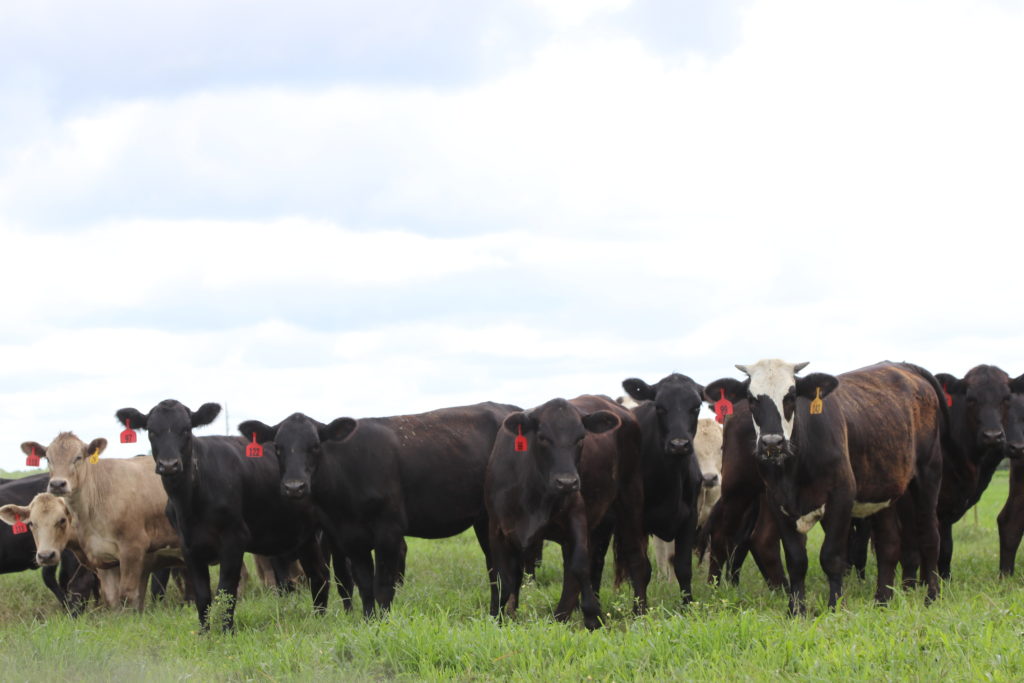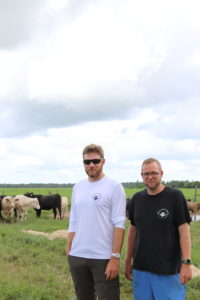Beef Tips: How To Sell And Source Local Beef

By Josie Chance
Fifth-generation row crop farmers Nathan and Adam Bartl and third-generation peach producer Ryan Cox have diverse operations, but one thing ties them together — success selling local beef.
“It began with family and friends, but with more consumers looking to eat local products, we had a fast-growing customer base,” said Ryan, who farms in Chilton County.
Selling local beef (also called freezer beef) helps farmers like Ryan market products in the community. The cattle are often harvested locally and sold directly to consumers instead of being sent to large-scale processors out West.

Take the Bartls, who focus on the beach tourism market with their father, Steve, in Baldwin County. They work with other farmers and markets to help sell Lillian Cattle Co. beef, which expands their reach.
“We started encountering difficulties with land rental due to development,” Steve said. “By selling beef directly to consumers, we were able to take the thing hurting our operation the most and turn it into profit.”
While the farms approach breed selection, pasture management and processing differently, both families offer similar advice to cattle producers contemplating jumping on the freezer beef bandwagon.
1 | Determine a market.
The Bartls offer whole and half purchase options where customers buy the animal before it’s processed, but their most popular products are individual packages of beef. To sell meat by the pound, processors must be U.S. Department of Agriculture-inspected. The Bartls said this route gives them market flexibility.
“If someone wants to buy a whole calf but backs out at the last minute, we still have a market for that animal,” said Nathan, who manages customer relations and processing.
Ryan and his wife, Cason, keep it simple. With Ryan’s full-time job, a busy peach season, Cason’s children’s clothing boutique and raising sons Monroe and McCoy, they are only able to offer whole and half beef options.
“We would have to have someone available for sales all the time if we did individual packaging,” Ryan said. “For our operation, that isn’t feasible right now.”
2 | Prepare to plan.
Whether sourcing feed, schedulingprocessing dates or finding technicians for freezer maintenance, the families spend months planning before the first customer picks up a package of beef.
Herd planning and processing dates dictate the Cox family’s freezer beef business.
“A quality cut of beef starts at conception,” Ryan said. “We decide months in advance how many calves to process and how many we are going to keep. That takes a lot of consideration and planning.”
Selling directly to consumers is a hefty investment and includes logo design, branding, freezers, freezer trailers and time.
3 | Allow time for “new” farm chores.
Beyond the normal tasks of caring for livestock and the land, direct sales add a marketing element to the farm.
The Cox and Bartl families are honest: Freezer beef is more time-intensive than expected.
“Managing the phone calls, trips to the processor, freezer issues and markets has become a full-time job,” Steve said. “Nathan focusing on this left a gap on our farm the rest of our family has worked to fill.”

4 | Consumer education is key.
Nathan’s wife, Randi; Adam’s wife, Hannah; and their mother, Michele, handle photography, social media and answering inquiries about products and farming.
“There are going to be questions,” Adam said. “You have to be willing to share information and invite people into the process.”
In Chilton County, Cason manages the farm’s Facebook page and fields questions at farmers markets.
“For farmers, the stuff you do every day seems normal,” Ryan said. “But consumers want to know how we do what we do.”
The producers also offered tips for consumers looking to purchase local beef.
1 | Buying local takes time.
Purchasing a half or whole side of beef isn’t a decision consumers can make the weekend before they want to stock their freezer, Nathan said.
“Our waiting list is already six months out,” he said.
Picking up a couple pounds of individually packaged ground beef means an extra stop for customers running errands, too.
But they can taste the difference, the Bartls said, noting marbling on steaks and the rich flavor in simple products like ground beef.
2 | Supporting farmers helps build community.
Ryan said the impact made by purchasing local products is immeasurable.
“You are supporting a neighbor down the road, putting my kid on a T-ball field and helping with braces,” he said. “The money that comes to my farm goes into my kids and our community.”
3 | Buying directly gives greater choice and value.
Farmers often offer to help customers fill out the cut sheet, or list of cuts the customer will receive. This includes cube steak, sirloin, rib-eye steaks, etc., in addition to ground beef.
4 | Beef is delicious, nutritious and safe.
Ryan said farmers who sell beef locally or ship cattle to larger feedyards work hard to produce safe, nutritious food, which they enjoy, too.
“Everything we grow here goes on his dinner plate every night,” said Ryan, nodding to his young son playing in the barn. “If it wasn’t safe for him, I wouldn’t feed it to you.”
To find local beef producers, visit the searchable database at SweetGrownAlabama.org or the online directory at BamaBeef.org.
